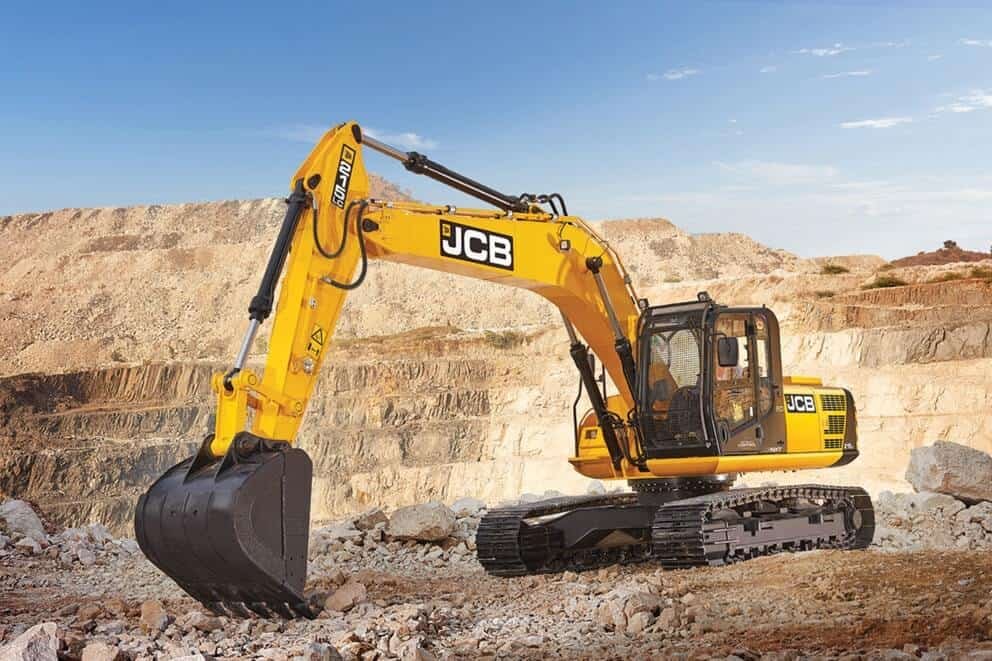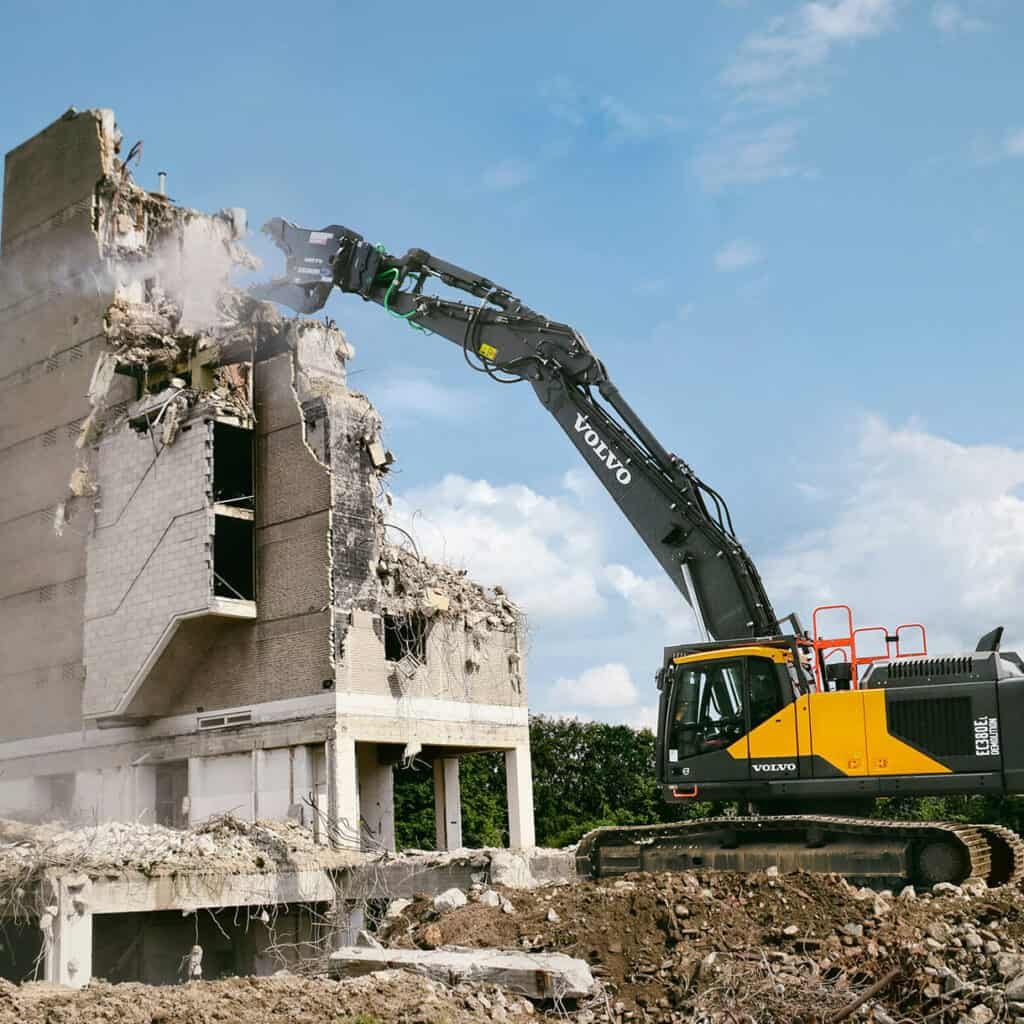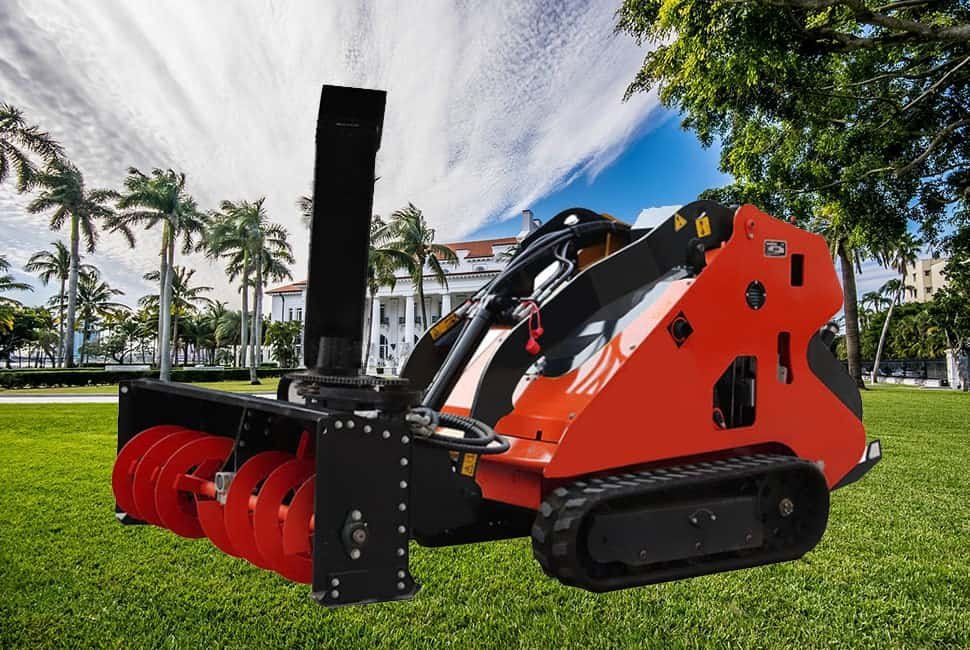Introduction
Are you interested in learning about the powerful machines used in demolition projects? Tracked excavators are one of the most essential and versatile tools in the demolition industry, providing stability, mobility, and power for various tasks. In this blog post, we’ll examine how tracked excavators are used in demolition projects and the many benefits they offer.
First, let’s define what a tracked excavator is. Unlike traditional excavators with wheels, tracked excavator use tracks for better stability and mobility on rough terrain. They also come equipped with various attachments, such as hydraulic hammers and demolition shears, which make them ideal for performing multiple demolition tasks.
Tracked excavator used in various demolition projects, including building, bridge, and road demolitions. Tracked excavators can be used for site preparation, structural dismantling, and material processing, depending on the specific project needs.
One of the key benefits of using tracked excavators in demolition projects is their speed and efficiency. These powerful machines can quickly break down structures and remove debris with less manual labour, leading to safer and more cost-effective demolition projects.
However, it’s important to note that using tracked excavator in demolition has potential safety risks. In the rest of this post, we’ll explore the various types of demolition projects where tracked excavator used and the safety considerations that need to be considered.
What Are Tracked Excavators?
Are you curious about what exactly tracked excavators are and how they differ from traditional excavators? Tracked excavators are heavy-duty machines used in various industries, including construction, mining, and demolition. They are characterised by using tracks instead of wheels, which provides excellent stability and mobility on rough terrain.
Tracked excavators are often equipped with various attachments, including hydraulic hammers, buckets, and demolition shears, allowing them to perform multiple tasks.
One of the key benefits of using tracked excavator is versatility. These machines are for various tasks, including digging, loading, and material processing. In addition, they can work in tight spaces and on uneven ground, making them ideal for a range of projects.
Tracked excavator comes in various sizes, ranging from small machines that can be transported by trailer to larger excavators that require transportation by truck. The size of the excavator needed for a project will depend on the specific job requirements and the size of the site.
While traditional excavators use wheels for movement, tracked excavators use tracks, providing excellent stability and mobility on rough terrain. The tracks are made of durable materials that are resistant to wear and tear, ensuring that the machine can withstand the demands of heavy use.
Tracked excavator is a powerful and versatile machine used in various industries, from construction to mining and demolition. With their stability, mobility, and range of attachments, they are essential tools for multiple projects.
Types Of Demolition Projects Where Tracked Excavators Are Used
What types of demolition projects are best suited for using tracked excavators? These versatile machines can be used for many demolition projects, from small residential to large commercial and industrial demolitions.
One everyday use of tracked excavator is in demolition projects is dismantling buildings. Tracked excavators can carefully and methodically dismantle structures piece by piece, ensuring the process is safe and controlled. A tracked excavator can also be used for selective demolition, where specific building portions are targeted for removal.
Tracked excavators are also commonly used in the demolition of bridges and roads. They can efficiently break down these structures and remove debris, allowing for the construction of new infrastructure. Tracked excavators can be used for site preparation, grading, and excavation.
Another area where tracked excavators excel in demolition projects is removing hazardous materials, such as asbestos or lead-based paint. They can be equipped with specialised attachments that allow for the safe removal and disposal of these materials.
Tracked excavators are also used to demolish industrial facilities, such as factories and warehouses. These structures often have complex systems and must be carefully dismantled, making tracked excavators an ideal tool for the job.
Tracked excavators are versatile and essential tools for many demolition projects, including building dismantling, bridge and road demolition, hazardous material removal, and industrial facility demolition. Their range of attachments and capabilities provides an efficient and safe way to tackle these complex projects.
How Tracked Excavators Are Used In Demolition Projects
Are you interested in learning how tracked excavator is used in demolition projects? Tracked excavator is essential for the demolition industry, providing stability, mobility, and power for various tasks. This post will examine how tracked excavators are used in demolition projects.
Site preparation is one of the primary uses of tracked excavator is in demolition projects. They can efficiently clear the site of any existing structures, vegetation, or debris, allowing for a safe and clean work environment. They can also perform excavation work, such as digging foundation trenches or grading the site.
Tracked excavator is also used for structural dismantling. They can carefully and methodically remove specific parts of a structure, such as walls, floors, or beams, without causing damage to adjacent structures. Careful dismantling is significant in urban areas with limited space, and adjacent buildings must be protected.
A tracked excavator can be used for material processing. They can break down concrete, steel, and other materials into smaller pieces, making them easier to transport and dispose of. Material processing is crucial for large demolition projects with large amounts of debris to be removed.
Another everyday use of tracked excavators in demolition projects is for hazardous material removal. They can be equipped with specialised attachments that allow for the safe removal and disposal of hazardous materials, such as asbestos or lead-based paint.
Tracked excavator is a versatile and powerful tool for many demolition projects, including site preparation, structural dismantling, material processing, and hazardous material removal. Their stability, mobility, and range of attachments are essential for safe and efficient demolition work.
Advantages Of Using Tracked Excavators In Demolition Projects
Are you curious about the advantages of using tracked excavators in demolition projects? Tracked excavators are ideal for demolition work, providing various benefits that make them essential.
One of the main advantages of using tracked excavators in demolition projects is their mobility. They can quickly move over rough terrain, making them ideal for demolition on uneven or difficult-to-access sites. They can also quickly move between site areas, allowing for efficient and practical work.
Another advantage of tracked excavators is their power. They can easily tackle even the most challenging demolition tasks, breaking down concrete, steel, and other materials. Power makes them a highly efficient tool for demolition work, allowing quicker completion times and cost savings.
Tracked excavators are also highly versatile. They can be equipped with various attachments, including demolition shears, pulverisers, and grapples, making them suitable for multiple demolition tasks. This versatility allows for a more streamlined and efficient demolition process.
In addition, tracked excavators are highly precise. They can be operated accurately, allowing for careful and controlled demolition work. High accuracy is critical in urban areas where adjacent building protection is the priority.
Finally, using tracked excavators in demolition projects can also have environmental benefits. They can efficiently sort and separate materials for recycling, reducing waste and promoting sustainable demolition practices.
The advantages of using tracked excavators in demolition projects are clear. Their mobility, power, versatility, precision, and environmental benefits make them essential tools for safe, efficient, and sustainable demolition work.
Safety Considerations When Using Tracked Excavators In Demolition Projects
When it comes to using tracked excavators in demolition projects, safety should always be a top priority. Here are some essential safety considerations when using tracked excavators in demolition projects.
First and foremost, ensuring that the excavator’s operator is appropriately trained and certified is essential. Training will ensure they know about the equipment, its capabilities, and proper safety procedures.
It is also essential to ensure the site is appropriately marked and secured to prevent unauthorised access, minimising the risk of accidents and injuries.
When operating the excavator, it is essential to maintain a safe distance from other workers and structures. Keeping space will help to prevent accidents and damage to nearby structures.
It is also essential to properly maintain and inspect the excavator to ensure it is in good working condition. Regular maintenance and inspections can prevent breakdowns and ensure the excavator operates safely.
Finally, it is crucial to properly dispose of any hazardous materials that may be present on the site. Hazardous materials may include asbestos, lead-based paint, or other dangerous substances. Proper disposal methods will help to protect workers and the environment from potential harm.
Safety is crucial when using tracked excavators in demolition projects. By ensuring that the operator is trained correctly, the site is adequately secured, a safe distance is maintained, the equipment is appropriately maintained, and hazardous materials are correctly disposed of, you can help to ensure a safe and successful demolition project.
Conclusion
In conclusion, we have discussed using tracked excavators in demolition projects, including their types, advantages, and safety considerations. Tracked excavators offer a range of benefits, including mobility, power, versatility, precision, and environmental benefits. However, it is crucial to prioritise safety when using these machines, including ensuring proper training, site security, distance maintenance, equipment maintenance, and hazardous material disposal. Following these guidelines can ensure a successful and safe demolition project.


